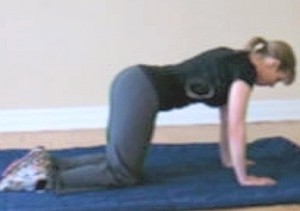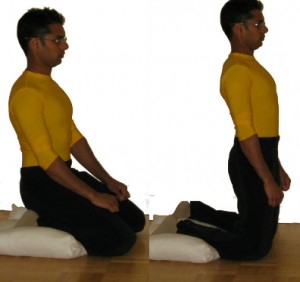In the previous post, I wrote about the 3 worst abdominal exercises for people with low back pain.
In reality, I could have written a list of ten, fifteen or even more ab exercises that should be avoided.
The three exercises that ended up on my no-no list, ended up there for a variety of reasons. Since this blog can’t account for every individual difference and most people wouldn’t stick around to read my tome if I tried, I picked those exercises that I felt were most commonly used or encountered in the real world.
This means I chose the exercises that a LOT of people with low back pain are doing.
They’re doing them at home (sit ups/crunches) or they’re doing them at the gym (twist and extension machines). And they’re potentially aggravating their back pain situation while under the notion that they’re doing something that should be helping them.
That was my rationale for part 1.
Now onward to part 2:
For starters, gold star if you noticed that this post used the word “core” instead of “abdominal” in the title.
Most incomplete low back pain programs will tout the advantages of abdominal training to relieve pain and resolve dysfunction.
Unfortunately, it doesn’t work that way.
Our core is much more than just the abdominal muscles. It’s more than the pretty six pack (rectus abdominis) that’s visible along the front of lean bodies. It’s also more than just the other muscles that make up the abdominal box (internal obliques, external obliques, transverse abdominis, diaphragm and pelvic floor).
Since there are so many different definitions of the core, I’m not going to list them all out. Suffice to say that I believe the better functional definitions of the core should include muscles of the hip, back and torso. All of which should work cohesively to stabilize the spine and allow for appropriate mobility at the hips and shoulders.
How’s that for a vague description? But I digress…
Moving on to what you’ve all been waiting for, here are my top 3 picks for core exercises for people with low back pain:
- The Birddog:This exercise has been a staple in my clients’ low back rehab programs for years and has proven its worth and then some. In fact, it’s a staple in my own programs whenever I’m getting back into any heavy lifting involving compound movements such squats, overhead presses, and dead lifts. The kicker, I don’t have any low back problems. Why the birddog? Because it’s simple to execute but forces the exerciser to pay attention to what he or she is doing. I’ve never seen anyone build rippling washboard abs using this exercise alone, but that’s not its purpose. It’s designed as a scalable, entry-to-mid-level core activation exercise that minimizes the compressive loading on the spine while still activating the appropriate protective muscle patterns. Which really just means that it helps stabilize the spine without having to creating excess force. Huge benefit with less risk. As with most injury rehab or performance-based training programs, I’m always looking to tip the scales in favour of benefit over risk, as often as possible.
- The Hip Hinge:This is another stalwart of my spinal rehab programs for much the same reasons as the birddog above. It’s simple, requires no equipment, and teaches a fundamental movement pattern that has the ability to protect our spines from current injury or potential trauma. When executed correctly, the hip hinge teaches us to move through our hips while keeping our spines stable. In my injury rehab and physical therapy treatment book, that’s a great combination! Benefits 2 – Risk 0.
- The Plank Variations:The ubiquitous plank…I actually like to break this exercise down into two distinct versions, the front plank and the side plank (each version can be either regressed or progressed according to ability and technical mastery of the person doing them). Again, this body weight based exercise requires no fancy equipment and very little space. It’s portable, straight-forward, and can teach numerous beneficial postural habits if we’re willing to learn from it. For most back pain sufferers, I prefer to start with the side plank variations as these minimize the loading on the spine while still engaging the core musculature. As technique and ability improve, these can be progressed to more challenging version then in to the front plank variations.
The most important component of choosing the appropriate core exercise for low back pain is to make sure that the exercise doesn’t cause you any pain. If it hurts, that’s usually your body’s signal that something’s wrong. In the end, it comes down to making sure you’re doing all your exercises right because you get what you train.
And there you have it, my top 3 choices of core exercises for people with low back pain.
Agree? Disagree? Have your own exercises?
Feel free to share your thoughts!
And if you’re struggling with back pain, contact us today to get booked in for your assessment!





(inside Peak Performance Golf)